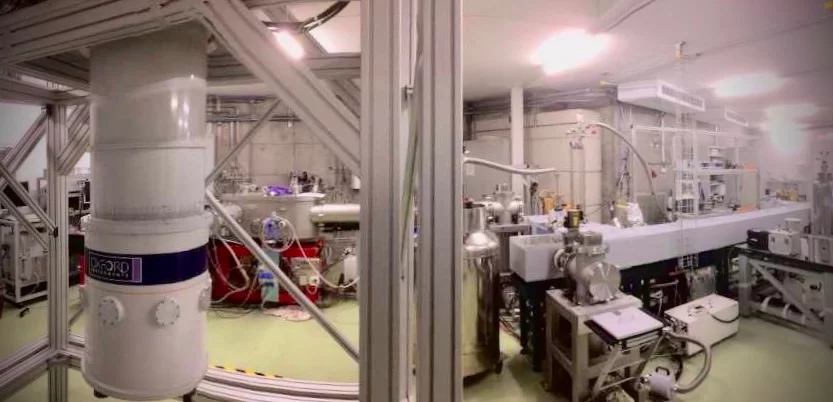QPS Optics Lab
The Quantum Photon Science optics lab is equipped with an ultra-high resolution Fourier transform infrared (FTIR) spectrometer, a dilution refrigerator and several laser sources with different characteristics.
In FTIR spectrometry the light is split into two arms - a fixed arm and a scanning one. The longer the scan arm, the higher the achievable frequency resolution is. Our ultra-high-resolution Fourier transform infrared (UHR-FTIR) spectrometer (Bruker IFS125HR) has the longest commercially available scanning arm available, at 6.3 meters, giving it a spectral resolution of 30 MHz. The light sources available are the standard internal ones (halogen for VIS/NIR, SiC glow bar for MIR/FIR and mercury vapor for FIR) as well as external sources, such as a supercontinuum laser (NKT SuperK extreme) for high power VIS/NIR/MIR, a THz quantum cascade laser and a photo luminescence setup. Measurement temperatures down to ~3.5 K are available using He flow cryostats which are also compatible with our microwave spectrometer (up to 40 GHz) / 1.4 T electromagnet.
Our measurement capabilities are further enhanced with the introduction of an optical-access dilution refrigerator with a base temperature of ~20 mK and a 2 T 3D vectormagnet.


